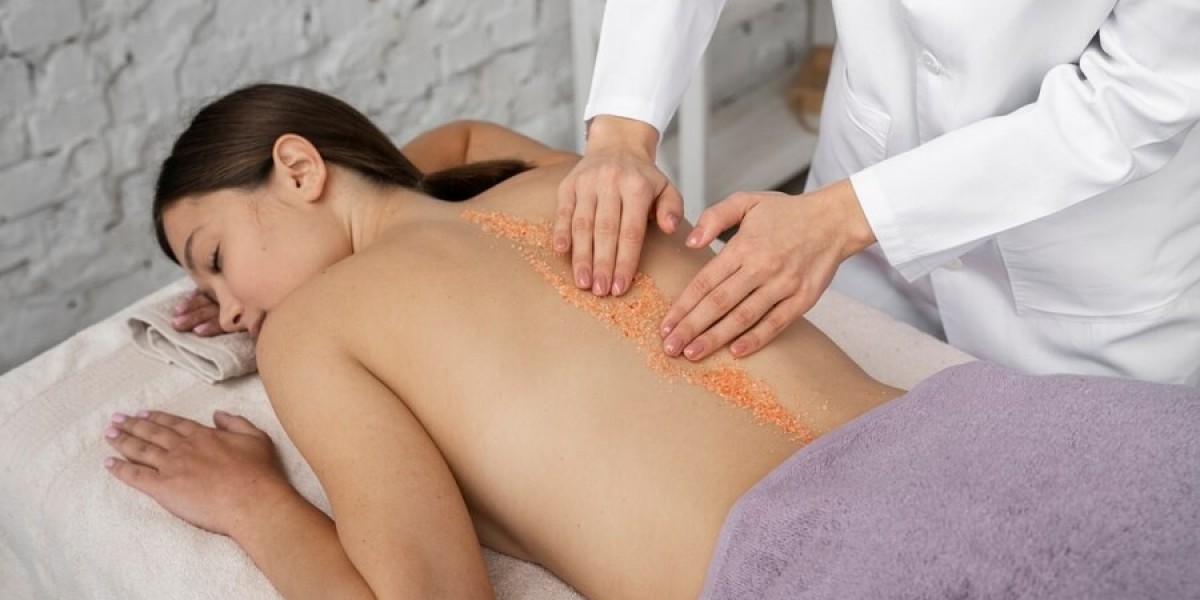Deep tissue massage is a popular therapy known for its ability to target the deeper layers of muscle tissue, offering a range of health benefits. If you're looking to relieve chronic pain, ease muscle tension, or improve your overall well-being, deep tissue massage may be exactly what you need. But how does it work, what are its benefits, and what should you expect during a session? In this guide, we’ll answer all of these questions and more.
What is Deep Tissue Massage?
Deep tissue massage is a type of therapeutic massage that focuses on the deeper layers of muscles and connective tissues in the body. Unlike a traditional Swedish massage, which uses lighter pressure for relaxation, deep tissue massage uses slower strokes and more intense pressure. It targets specific muscle groups, helping to break down muscle knots, release tension, and improve circulation.
Massage therapists use their fingers, thumbs, elbows, and forearms to apply deeper pressure, often working through the muscle fibers. This type of massage can be both relaxing and therapeutic, as it helps to improve flexibility and relieve tension from chronic muscle problems.
Key Benefits of Deep Tissue Massage
There are many reasons why people turn to deep tissue massage for relief and relaxation. Here are some of the most common benefits:
1. Pain Relief
One of the main reasons people opt for deep tissue massage is its ability to relieve chronic pain. Whether you have a nagging shoulder ache, lower back pain, or muscle tightness from poor posture or intense physical activity, deep tissue massage can target the source of the discomfort. By applying sustained pressure, the massage helps to release the muscle knots that contribute to pain and discomfort, allowing the muscles to relax and recover.
2. Improved Blood Circulation
Deep tissue massage encourages improved blood flow, especially to areas that may be restricted or stiff. Enhanced circulation helps deliver oxygen and nutrients to muscle tissues, promoting healing and reducing inflammation. This is particularly beneficial for people who have poor circulation or those recovering from an injury.
3. Reduced Muscle Tension and Stiffness
Muscle stiffness is a common issue for many, particularly after exercise or sitting for long periods. Deep tissue massage can relieve muscle tension by targeting tight muscles and muscle adhesions (knots). As the therapist works through the muscles, these tight areas begin to loosen, improving overall flexibility and reducing discomfort.
4. Stress Reduction and Relaxation
Although deep tissue massage is more intense than a typical relaxing massage at home, it can still lead to significant stress relief. As the therapist works to release tension, the body begins to relax. The deep pressure applied to key areas helps release built-up stress and promotes mental and physical relaxation.
5. Better Posture
Regular deep tissue massage can help correct posture issues caused by muscle imbalances or chronic tension. The massage helps to realign and relax tight muscles in the neck, back, and shoulders, which can lead to improved posture over time. As the muscles become more flexible, you may also experience less discomfort from standing or sitting in certain positions.
6. Faster Recovery After Exercise
Athletes often use deep tissue massage to speed up recovery after an intense workout. By targeting specific muscle groups that are sore or tight after exercise, deep tissue massage helps to reduce muscle soreness and stiffness, allowing for quicker recovery. This makes it easier to get back to training or your regular activities.
Techniques Used in Deep Tissue Massage
During a deep tissue massage session, the therapist will use various techniques to manipulate the deeper layers of muscles and connective tissue. Here are some of the most common methods used:
1. Slow Strokes
Therapists use slow, deliberate strokes to reach deeper layers of tissue. These strokes may be directed across the muscle fibers or along the muscle's length to help release tension and break up knots.
2. Friction
Friction involves applying deep pressure in a back-and-forth motion, usually over an area of muscle that’s particularly tight or knotted. This technique is effective in helping to break down adhesions in the muscle tissues.
3. Kneading
Kneading is similar to how a baker kneads dough, where the therapist uses their hands to press, lift, and roll the muscle. This helps to increase blood flow and release muscle tension.
4. Trigger Point Therapy
Trigger points are tight, tender areas within the muscle that can cause pain. Trigger point therapy involves applying pressure to these points to release the muscle tension and alleviate pain.
5. Stretching
Stretching techniques may be incorporated into the massage, where the therapist gently pulls and stretches muscles to improve flexibility. This can be especially helpful in releasing tension in large muscle groups like the hamstrings or lower back.
What to Expect During a Deep Tissue Massage
If you’ve never had a deep tissue massage before, it’s helpful to know what to expect so you can feel comfortable during the session. Here’s a step-by-step overview:
1. Initial Consultation
Before the massage begins, the therapist will ask about your health history, any areas of discomfort, and your specific goals. This is a good time to discuss areas that need extra attention, such as a tight back or sore shoulders.
2. Positioning
You’ll be asked to lie down on a massage table, typically face down, although your therapist may ask you to switch positions during the session, especially if they are targeting specific muscle groups.
3. Pressure and Intensity
Deep tissue massage involves significant pressure, but the therapist should always ask for feedback regarding the intensity. If you experience pain or discomfort, let the therapist know, and they can adjust accordingly. While some discomfort is normal, deep tissue massage should never be unbearable.
4. Post-Massage Advice
After your session, you may feel sore or tender in the areas that were worked on, but this typically subsides within 24 to 48 hours. Drink plenty of water to help flush out toxins that may have been released during the massage. Your therapist may also offer advice on stretches or self-care techniques to further support your recovery.
How to Prepare for a Deep Tissue Massage
To get the most out of your deep tissue massage, consider these preparation tips:
1. Communicate Your Needs
Be open with your therapist about your areas of tension or discomfort. This will help them focus on the most problematic areas and provide the most effective treatment.
2. Wear Comfortable Clothing
While you’ll likely be asked to undress to your level of comfort, you can wear loose clothing if that’s more comfortable for you. The therapist will drape towels or sheets to maintain your privacy.
3. Avoid Eating a Heavy Meal Beforehand
A full stomach may make you feel uncomfortable during the massage. Try to eat a light meal a couple of hours before your session.
4. Hydrate Before and After
Drinking water before and after your massage helps to support the flushing of toxins and keeps your muscles hydrated. It also helps prevent soreness after the session.
Deep Tissue Massage Aftercare
After your session, here are a few tips to help your body recover and continue feeling the benefits:
Rest: Allow your body to recover by taking it easy after your massage. Avoid strenuous activity for a few hours to give your muscles time to relax.
Hydrate: Drink plenty of water to help flush out any toxins that may have been released during the massage.
Gentle Stretches: Light stretching can help prevent your muscles from becoming stiff and further enhance flexibility.
Heat or Cold: Applying a heating pad or cold compress to sore muscles can help alleviate any discomfort you may feel after the session.
Conclusion
Deep tissue massage is a powerful therapy that can provide significant relief for muscle pain, improve flexibility, and enhance relaxation. Whether you're dealing with chronic pain, recovering from an injury, or simply want to relieve stress, this therapeutic massage technique offers a wide range of benefits. By understanding what deep tissue massage entails and how it works, you can make the most of your sessions and achieve lasting improvements in your physical and mental well-being.









